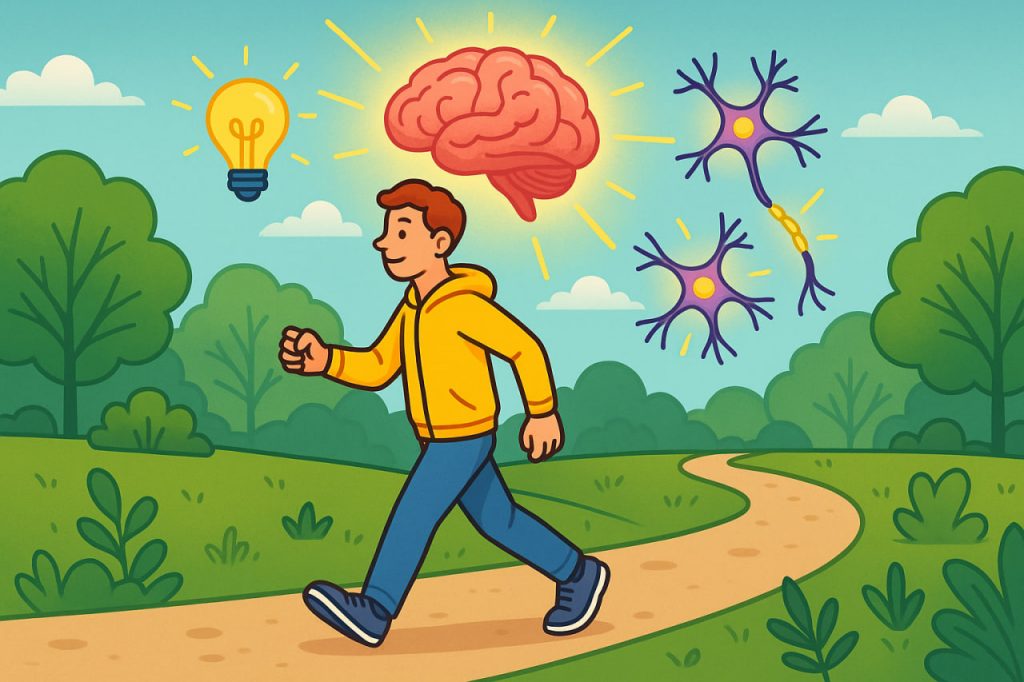Walking is one of the simplest and most accessible forms of physical activity, yet its benefits go far beyond strengthening muscles and improving cardiovascular health. Scientific studies show that walking directly enhances brain function, boosting memory, creativity, and emotional balance. This natural form of movement increases blood flow to the brain, stimulates the release of beneficial chemicals, and supports long-term cognitive health.
Increased Blood Flow and Oxygen Supply
During walking, the heart pumps faster, increasing blood circulation throughout the body, including the brain. This improves oxygen and nutrient delivery to brain cells, which enhances alertness and concentration. Better blood flow also promotes the growth of new blood vessels in the brain, helping to maintain brain health as we age.
Stimulation of Neuroplasticity
Walking stimulates the production of growth factors that support neuroplasticity—the brain’s ability to form new neural connections. This process is crucial for learning, memory, and adapting to new situations. Regular walking helps maintain cognitive flexibility and reduces the risk of age-related decline in brain function.
Boosting Creativity and Problem-Solving
Research has found that people who walk, especially in natural environments, experience a boost in creativity and problem-solving ability. Walking allows the brain to relax from intense focus, opening space for new ideas and insights. Many writers, scientists, and thinkers have used walking as a way to inspire creativity and innovation.
Mood and Stress Regulation
Walking also improves brain activity by regulating mood. Physical activity stimulates the release of endorphins and serotonin, chemicals that reduce stress and anxiety. At the same time, walking lowers cortisol levels, creating a calmer mental state. A simple daily walk can significantly improve emotional balance and resilience.
Memory and Cognitive Protection
Regular walking has been shown to protect against memory loss and cognitive decline. By improving blood flow and stimulating the hippocampus (the brain area responsible for memory), walking reduces the risk of Alzheimer’s disease and dementia. Even moderate walking, such as 30 minutes a day, provides measurable benefits for long-term brain health.
Conclusion
Walking is a powerful yet simple way to improve brain activity. It increases blood flow, stimulates neuroplasticity, enhances creativity, reduces stress, and protects memory. Whether it is a brisk walk in the park, a stroll after lunch, or a mindful walk in nature, this habit supports both mental performance and emotional well-being.
Glossary
- Neuroplasticity – the brain’s ability to form new connections and adapt to changes.
- Endorphins – natural chemicals released during exercise that improve mood and reduce pain.
- Serotonin – a neurotransmitter that regulates mood, sleep, and appetite.
- Hippocampus – a part of the brain important for memory and learning.
- Cortisol – a stress hormone that can harm the brain if present in high amounts for long periods.


